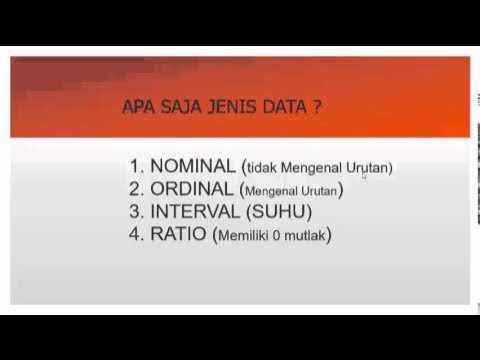t-Test - Full Course - Everything you need to know
Summary
TLDRThis video offers a comprehensive guide to the t-test, explaining its purpose, types, and application in statistical analysis. It details when to use one-sample, independent samples, and paired samples t-tests, and covers the underlying assumptions and hypotheses. The script also illustrates how to calculate the t-value, interpret results, and understand the significance of p-values in hypothesis testing. With examples and a step-by-step approach, it demystifies the process of determining statistical significance in various scenarios.
Takeaways
- 🔍 A t-test is a statistical procedure used to analyze if there is a significant difference between the means of two groups.
- 📊 There are three types of t-tests: one sample t-test, independent samples t-test, and paired samples t-test, each used in different scenarios.
- 🍫 The one sample t-test compares a sample mean to a known reference mean, such as verifying the average weight of a chocolate bar.
- 🤝 The independent samples t-test is used to compare the means of two independent groups, like the effectiveness of two different painkillers.
- 🔗 The paired samples t-test assesses the means of two dependent groups, such as the weight difference before and after a diet for the same individuals.
- 📈 The assumptions for a t-test include having a suitable sample, metric variables, normal distribution of the metric variable, and equal variances in the case of independent samples t-test.
- ⚖️ The hypotheses of a t-test involve a null hypothesis stating no difference and an alternative hypothesis suggesting a difference between the means.
- 📝 The t-test calculation involves determining a T value based on the difference between means and the standard error.
- 📉 The p-value indicates the likelihood of drawing a sample that deviates from the null hypothesis by the same or greater amount, helping to decide whether to reject the null hypothesis.
- 📊 The T value is used to compare against a critical T value from a table or to calculate a p-value to determine if the null hypothesis can be rejected.
- 🧭 The significance level, often set at 5%, defines the threshold for rejecting the null hypothesis based on the p-value.
- 🔄 The difference between directed and undirected hypotheses lies in whether the direction of the difference between means is of interest, such as whether men or women earn more on average.
Q & A
What is the purpose of a t-test in statistics?
-A t-test is a statistical procedure used to analyze whether there is a significant difference between the means of two groups.
What are the three types of t-tests mentioned in the script?
-The three types of t-tests are the one sample t-test, the independent samples t-test, and the paired samples t-test.
When would you use a one sample t-test?
-A one sample t-test is used when you want to compare the mean of a sample with a known reference mean, such as verifying a manufacturer's claim about the average weight of a product.
How is an independent samples t-test different from a paired samples t-test?
-An independent samples t-test is used to compare the means of two independent groups, while a paired samples t-test is used to compare the means of two dependent groups, such as before and after measurements on the same subjects.
What assumptions are necessary for a t-test to be valid?
-The assumptions for a t-test include having a suitable sample, the variable of interest being metric and normally distributed, and in the case of an independent t-test, the variances in the two groups being approximately equal.
What is the null hypothesis in a one sample t-test?
-In a one sample t-test, the null hypothesis is that the sample mean is equal to the given reference value, indicating no difference.
How is the T value calculated in a t-test?
-The T value is calculated by determining the difference between the means and the standard error of the mean, which is the standard deviation divided by the square root of the number of cases.
What is the significance of the p-value in the context of a t-test?
-The p-value indicates the probability of drawing a sample that deviates from the null hypothesis by the same amount or more, and it helps determine whether to reject the null hypothesis based on the significance level.
How do you decide whether to reject the null hypothesis based on the T value?
-You can decide to reject the null hypothesis if the calculated T value is greater than the critical T value from a table or if the p-value is less than the significance level, typically set at 0.05.
What is the difference between a directed and an undirected hypothesis in a t-test?
-An undirected hypothesis is concerned with whether there is a difference without specifying the direction, while a directed hypothesis specifies the direction of the difference, such as one group being greater than the other.
Outlines

Этот раздел доступен только подписчикам платных тарифов. Пожалуйста, перейдите на платный тариф для доступа.
Перейти на платный тарифMindmap

Этот раздел доступен только подписчикам платных тарифов. Пожалуйста, перейдите на платный тариф для доступа.
Перейти на платный тарифKeywords

Этот раздел доступен только подписчикам платных тарифов. Пожалуйста, перейдите на платный тариф для доступа.
Перейти на платный тарифHighlights

Этот раздел доступен только подписчикам платных тарифов. Пожалуйста, перейдите на платный тариф для доступа.
Перейти на платный тарифTranscripts

Этот раздел доступен только подписчикам платных тарифов. Пожалуйста, перейдите на платный тариф для доступа.
Перейти на платный тариф5.0 / 5 (0 votes)






